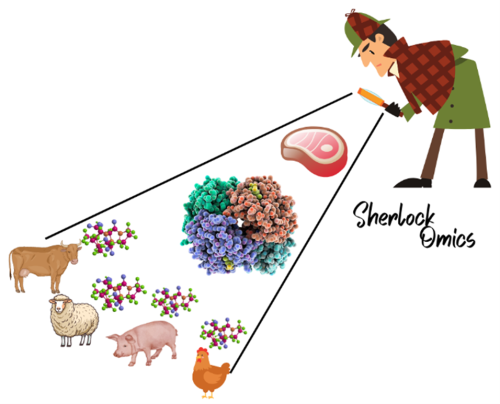The food industry is facing a major challenge with imported food because of a lack of transparency regarding the origin of our food in an increasingly connected globe. This lack of clarity presents a range of challenges for food authenticity, ranging from safety concerns to health, religious and ethical issues.
One potential issue in the global food market is the mislabelling of products. Meat, a staple food for many, is particularly vulnerable. Confusion can happen intentionally, when one type of meat is substituted for a cheaper one, or unintentionally, through cross-contamination when different types of meat are processed in the same facilities. Fraudulent practices, such as misrepresenting the geographical origin of products or falsely advertising the ingredients in certain products, can also be a problem for consumers who are unsure of what they are eating, and may, therefore, unwittingly support unsustainable practices or consume meat that doesn't meet safety standards.
Consequently, there is a growing need for tools that can determine the provenance of food as well as verify its composition. Governments and authorities are under pressure to take stronger action against fraudulent practices and to ensure that food labels provide accurate and reliable information – but how can this be policed?
This is where the science comes in to help solve these problems. Analytical chemistry techniques, such as mass spectrometry (MS) and liquid chromatography (LC), are being used by scientists to identify small molecules such as peptides, proteins and fats to check that labels correctly reflect the composition of foods. Peptides are chains of amino acids that build proteins, and proteins are the main component of meat. The exact sequence of the amino acids in the proteins that make up meat are determined by the species of the animal. Indeed, in some cases the sequence varies between different breeds of one species. We can use this to determine exactly what meat is being used in a mixture such as the filing of a pie. It is like being a detective investigating a crime scene, but instead of fingerprints, scientists are looking at molecules to work out what went into the meal.
Each type of meat has its own unique set of peptides that create a distinctive pattern. By decoding this pattern, scientists can tell whether your burger is really 100% Angus beef, as the label says, or whether it has been mixed with pork or chicken to reduce costs. Not only are there different peptides between species, but there are also within species, like in different cuts of meat. So, LC-MS allows us to detect possible fraud in meat products, for instance, if cheaper cuts of meat have been mixed with or sold as premium ones. Nobody wants to buy a pig in a poke.
Figure 1. Sequence of steps in a proteomics workflow for meat authentication in meat products.
Our research group at the Rowett Institute has developed a proteomic method to identify the provenance of products of importance to the Scottish economy, including beef and lamb. Our goal is to provide a robust and accurate method that can be replicated and used in other laboratories to tackle the global problem of mislabelling. To achieve this, we analysed a range of meats (beef, pork, chicken, lamb, horse, venison and turkey) from different supermarkets in Aberdeen, Scotland. For each type of meat, we identified a unique set of peptides, similar to a fingerprint. We then replicated the experiment to confirm the consistency of our findings. This method works in both raw and cooked meat.
The next step in the project will be to apply our method to processed meat products, such as meat pies and sausages, to verify that this set of peptides specific to each type of meat can be identified according to the labels, and at what levels we can detect a contaminant. For example, if the label on a meat pie says beef, it would be wrong to find peptides related to chicken or pork, right? This approach will be valuable in identifying potential fraud in the Scottish meat sector and the UK supply chain, giving customers more confidence in the quality of the products they buy.
Dr Renata Garbellini Duft, the Rowett Institute.
